 W
WThe Treaty of Altranstädt was concluded between Charles XII of Sweden and Augustus the Strong of Saxony and Poland–Lithuania, on 13 October 1706, during the Great Northern War. Augustus had to renounce his claims to the Polish throne and his alliance with Russia.
 W
WThe Treaty of Bromberg or Treaty of Bydgoszcz was a treaty between John II Casimir of Poland and Elector Frederick William of Brandenburg-Prussia that was ratified at Bromberg (Bydgoszcz) on 6 November 1657. The treaty had several agreements, including the Treaty of Wehlau, signed on 19 September 1657 by the Brandenburg–Prussian and Polish–Lithuanian envoys in Wehlau. Thus, the Treaty of Bromberg is sometimes referred to as treaty of Wehlau-Bromberg or Treaty of Wehlau and Bromberg.
 W
WThe Treaty of Buchach was signed on 18 October 1672 in Buczacz between the Polish–Lithuanian Commonwealth under King Michał Korybut Wiśniowiecki, who had been unable to raise a suitable army, on the one side and the Ottoman Empire on the other side, ending the first phase of the Polish-Ottoman War (1672-1676).
 W
WThe Peace of Busza also known as the Treaty of Jaruga was negotiated by Stanisław Żółkiewski of the Polish–Lithuanian Commonwealth and Iskender Pasha of the Ottoman Empire in Busza near the Jaruga and Dniester rivers on 23 September 1617. Polish and Ottoman armies met, but decided to negotiate, instead of to fight. In this peace treaty Polish–Lithuanian Commonwealth agreed to cede the Khotyn to the Ottomans and to stop its interference in Moldavia.
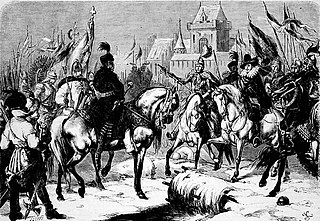 W
WTreaty of Bytom and Będzin or Treaty of Będzin and Bytom was a treaty signed between the Polish–Lithuanian Commonwealth and the Austrian House of Habsburg on 9 March 1589. It was favorable to the Commonwealth.
 W
WThe Truce of Deulino was signed on 11 December 1618 and took effect on 4 January 1619. It concluded the Polish–Muscovite War (1605–1618) between the Polish–Lithuanian Commonwealth and the Tsardom of Russia.
 W
WA Treaty of Perpetual Peace between the Tsardom of Russia and the Polish–Lithuanian Commonwealth was signed on 6 May 1686 in Moscow by Polish–Lithuanian Commonwealth envoys: voivod of Poznań Krzysztof Grzymułtowski and chancellor (kanclerz) of Lithuania Marcjan Ogiński and Russian knyaz Vasily Vasilyevich Golitsyn. These parties were moved to cooperate after a major geopolitical intervention in Ukraine on the part of the Ottoman Empire.
 W
WThe First Partition of Poland took place in 1772 as the first of three partitions that eventually ended the existence of the Polish–Lithuanian Commonwealth by 1795. The growth of power in the Russian Empire threatened the Kingdom of Prussia and the Habsburg Monarchy and was the primary motive behind the First Partition.
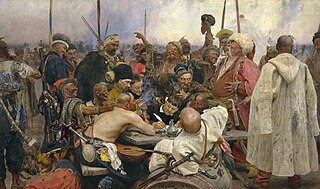 W
WThe Treaty of Hadiach was a treaty signed on 16 September 1658 in Hadiach between representatives of the Polish–Lithuanian Commonwealth and Zaporozhian Cossacks. It was designed to elevate the Cossacks and Ruthenians to the position equal to that of Poland and Lithuania in the Polish–Lithuanian union and in fact transforming the Polish–Lithuanian Commonwealth into a Polish–Lithuanian–Ruthenian Commonwealth.
 W
WThe Treaty of Karlowitz was signed on 26 January 1699 in Sremski Karlovci, concluding the Great Turkish War of 1683–1697 in which the Ottoman Empire had been defeated at the Battle of Zenta by the Holy League. It marks the end of Ottoman control in much of Central Europe, with their first major territorial losses after centuries of expansion, and established the Habsburg Monarchy as the dominant power in the region.
 W
WTreaty of Khotyn (Chocim/Hotin), signed in the aftermath of the Battle of Khotyn (1621), ended the Polish-Ottoman War (1620–1621). This peace treaty resulted in no border change but Polish–Lithuanian Commonwealth agreed to stop its interference in Moldavia. Both sides claimed victory, as Commonwealth saw the battle of Khotyn as successfully stopping the Ottoman Empire's invasion of its mainland.
 W
WThe Treaty or Peace of Oliva of 23 April (OS)/3 May (NS) 1660 was one of the peace treaties ending the Second Northern War (1655-1660). The Treaty of Oliva, the Treaty of Copenhagen in the same year, and the Treaty of Cardis in the following year marked the high point of the Swedish Empire.
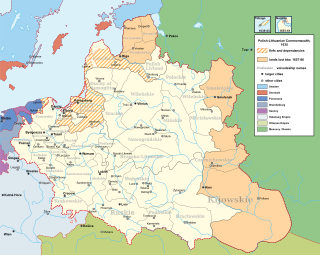 W
WThe Treaty of Polyanovka was a peace treaty signed on 14 June 1634 between the Polish–Lithuanian Commonwealth and the Tsardom of Russia in the village of Semlevo located near the Polyanovka river between Vyazma and Dorogobuzh.
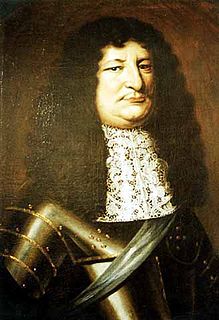 W
WThe treaty of Rinsk, concluded on 2 November (O.S.) / 12 November (N.S.) 1655, was a Ducal-Royal Prussian alliance during the Second Northern War. Frederick William I, Elector of Brandenburg and duke of Prussia, and the nobles of Royal Prussia agreed to allow Brandenburgian garrisons in Royal Prussia to defend it against the imminent Swedish invasion. The important towns of Danzig (Gdańsk), Thorn (Toruń) and Elbing (Elbląg) did not participate in the treaty and were not garrisoned by Brandenburgian troops, and except for Danzig surrendered to Sweden. The remainder of Royal Prussia, except for Marienburg (Malbork) was overrun by Sweden and Frederick William I's forces pursued to Königsberg, where he was forced to accept Swedish overlordship in the Treaty of Königsberg in January 1656.
 W
WThe 1793 Second Partition of Poland was the second of three partitions that ended the existence of the Polish–Lithuanian Commonwealth by 1795. The second partition occurred in the aftermath of the Polish–Russian War of 1792 and the Targowica Confederation of 1792, and was approved by its territorial beneficiaries, the Russian Empire and the Kingdom of Prussia. The division was ratified by the coerced Polish parliament (Sejm) in 1793 in a short-lived attempt to prevent the inevitable complete annexation of Poland, the Third Partition.
 W
WThe Treaty of Stettin of 13 December 1570, ended the Northern Seven Years' War fought between Sweden and Denmark with her internally fragmented alliance of Lübeck and Poland. It also settled Swedish, Danish, and Holy Roman Imperial claims regarding the Livonian War. Unfavourable for Sweden, the treaty assured Danish hegemony in Northern Europe for a short period. Yet, because of its inconclusiveness, it did not prevent further warfare between Denmark-Norway and Sweden, which ended only in the 1720s.
 W
WThe Treaty of Stuhmsdorf, or Sztumska Wieś, was a treaty signed on 12 September 1635 between the Polish–Lithuanian Commonwealth and the Swedish Empire in the village of Stuhmsdorf, Poland, just south of Stuhm (Sztum).
 W
WTreaty of Naples was a political-military agreement between the Kingdom of Spain and the Kingdom of Poland, signed in Naples in late 1639. The Polish king Władysław IV agreed to raise an army of 17,000 men, which would consist of 12,000 cavalry and 5,000 infantry. Following transit across the imperial territory, the troops were to be employed under Spanish command in Flanders against the French. The Spanish king Felipe IV, apart from covering recruitment and maintenance cost, was to pay the Polish monarch 500,000 Neapolitan escudos. The Poles almost immediately demanded re-negotiation of the treaty, which resulted in another agreement concluded in 1641; the Spaniards were to pay more for an even smaller army. Neither this treaty has been implemented, and the Madrid court cancelled the deal in early 1642. The treaty remains the only bilateral Spanish-Polish military alliance agreement ever concluded between the two countries.
 W
WThe six-year Truce of Altmark was signed on 16 (O.S.)/26 (N.S.) September 1629 in the village of Altmark, in Poland, by the Polish–Lithuanian Commonwealth and Sweden, ending the Polish–Swedish War (1626–1629).
 W
WThe Truce of Andrusovo established a thirteen-and-a-half year truce, signed in 1667 between the Tsardom of Russia and the Polish–Lithuanian Commonwealth, which had fought the Russo-Polish War since 1654 over the territories of modern-day Ukraine and Belarus.
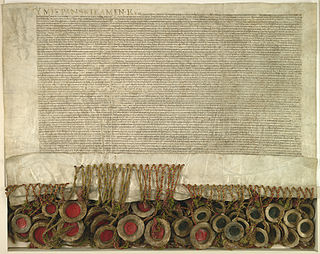 W
WThe Union of Lublin was signed on 1 July 1569 in Lublin, Poland, and created a single state, the Polish–Lithuanian Commonwealth, one of the largest countries in Europe at the time. It replaced the personal union of the Crown of the Kingdom of Poland and the Grand Duchy of Lithuania with a real union and an elective monarchy, since Sigismund II Augustus, the last of the Jagiellons, remained childless after three marriages. In addition, the autonomy of Royal Prussia was largely abandoned. The Duchy of Livonia, tied to Lithuania in real union since the Union of Grodno (1566), became a Polish–Lithuanian condominium.
 W
WThe treaty of Vienna, concluded on 1 December 1656, was an Austro–Polish alliance during the Second Northern War. Habsburg emperor Ferdinand III agreed to enter the war on the anti-Swedish side and support the Polish king John II Casimir with 4,000 troops. The treaty was, however, dissatisfying for John II Casimir, who had hoped for more substantial aid, and further ineffective as Ferdinand III died three days after giving his signature. A similar, but more effective alliance was concluded by Ferdinand III's successor Leopold I in the Treaty of Vienna (1657).
 W
WThe Treaty of Vienna, concluded on 27 May 1657, was an Austro–Polish alliance during the Second Northern War. After Habsburg emperor Ferdinand III had agreed to
 W
WThe Treaty of Vilnius or Vilna was concluded on 28 November 1561, during the Livonian War, between the Livonian Confederation and the Grand Duchy of Lithuania in Vilnius. With the treaty, the non-Danish and non-Swedish part of Livonia, with the exception of the Free imperial city of Riga, subjected itself to the Grand Duke of Lithuania, Sigismund II Augustus with the Pacta subiectionis . In turn, Sigismund granted protection from the Tsardom of Russia and confirmed the Livonian estates' traditional privileges, laid out in the Privilegium Sigismundi Augusti.
 W
WThe Truce or Treaty of Yam-Zapolsky (Ям-Запольский) or Jam Zapolski, signed on 15 January 1582 between the Polish–Lithuanian Commonwealth and the Tsardom of Russia, was one of the treaties that ended the Livonian War. It followed the successful Livonian campaign of Stephen Báthory, culminating in the siege of Pskov.